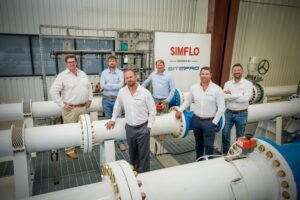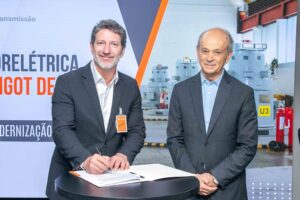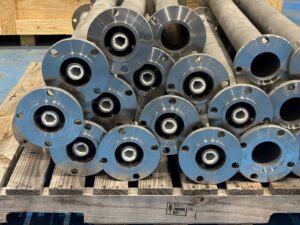Australia – first on track in large-scale railway project
Manpower is required for building a 1,420-kilometer long railway through one of the most arid and inhospitable regions in the world. And the men who will be laying the track will need water. Therefore, Grundfos pumps will be playing a vital role in one of Australia's largest ever infrastructure projects.
Once the new railway is complete in 2004, it will stretch from Adelaide in the South to Darwin in the North. However, before that 145,000 tons of rails and two million sleepers must be laid, 1,500 culverts set up and 100 bridges constructed.
As the tracks gradually make their way through this landscape, the construction workers will be living in camps, each accommodating up to 160 people, and their daily water requirements will be covered en route by five mobile water treatment plants.
Water purification required
The raw water is not suitable for drinking; it must be desalinated and purified first. So, it will undergo processes such as being forced through the membranes of a filtration plant before being collected in a tank, ready for use. Grundfos' contribution to the system is a CHI pump and a CRN pump, which force the water through the filtration plant, and three CRN pumps to deliver the water to the camp.
The Grundfos pumps are an integral part of the water treatment plant - together with the storage tank and the automatic control systems, which are needed for the chemicals used for purification and disinfection of the purified water. The complete water treatment plant, which is capable of supplying 30,000 litres of water per day, has been built into a dusttight, special corrosion-proof container, equipped with air conditioning. When the work team moves to the next camp along the route the container housing the water treatment plant goes with them and is connected up to a new bore well.
Remote monitoring via satellite
The containers are sealed, as the construction workers in the camps do not need to be able to access them at all. All the components in the water treatment plants - including the Grundfos pumps - can easily be remotemonitored and controlled from a central service centre via a specially-established satellite link. This means that if a problem arises with one of the pumps, it is possible to switch over to another pump from 1,500 kilometres away until someone can get out to the site to repair it.
The party responsible for the mobile water treatment plants is water treatment firm Osmoflo, who have entered into a rather unusual contract with railway construction firm Adrail to supply water for the track construction project. Unusual in that Adrail will only be paying for the water used - and is leaving the entire logistics behind it to Osmoflo. This means that Osmoflo will be taking back all the mobile water treatment plants once the construction work is over.
They will probably hardly give a thought to the fact that their trip is only possible because others before them did the hard work required while quenching their thirst with water supplied by Grundfos pumps.
Source: Grundfos Holding A/S







